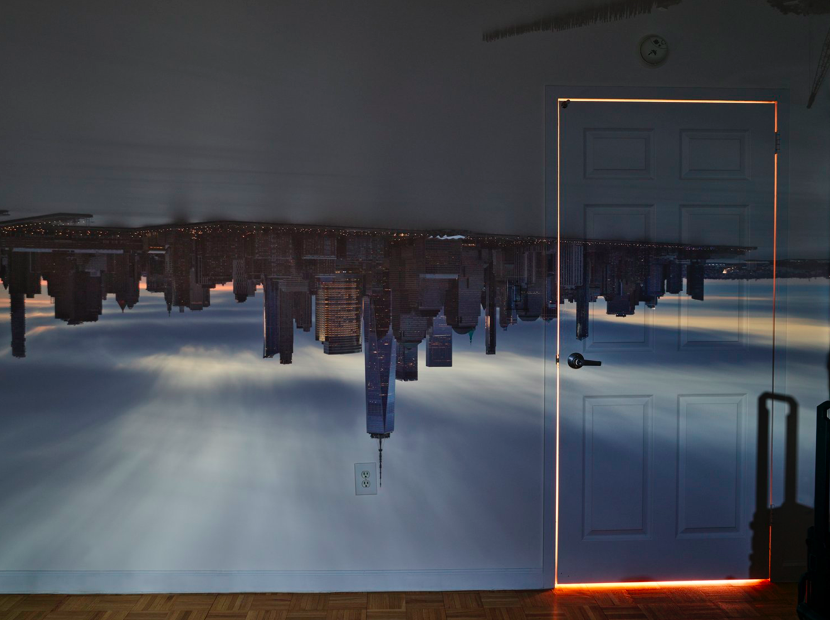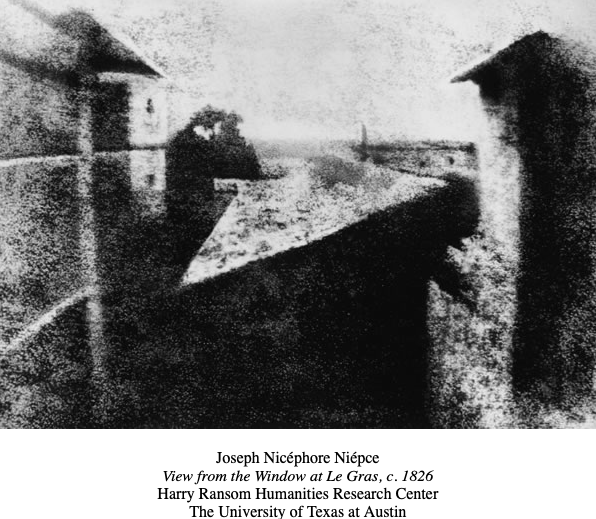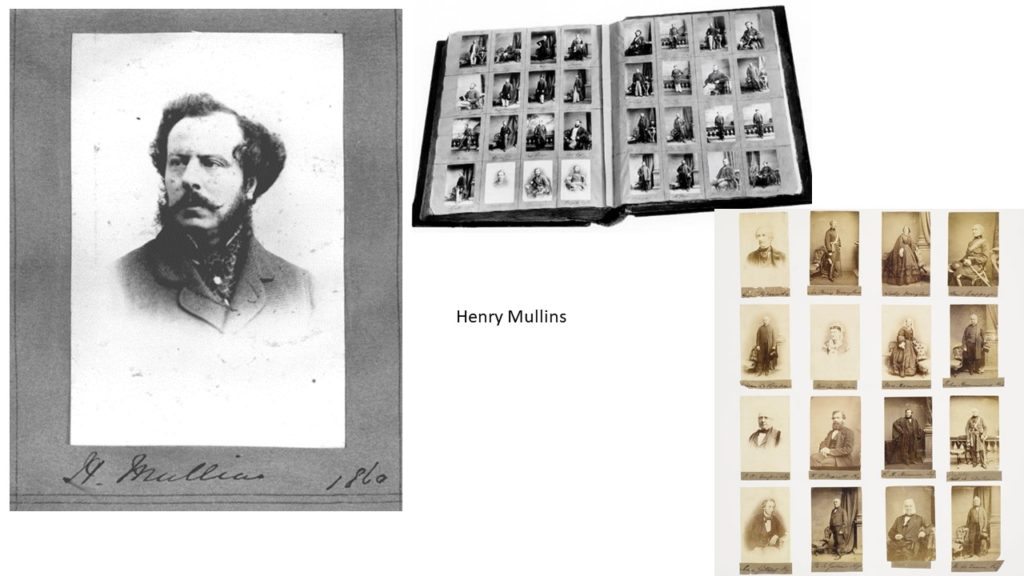NARRATIVE STORY: What is your story?
Describe in:
- 3 words
- A sentence
- A paragraph
NARRATIVE: How will you tell your story?
- Images > New St Helier Harbour photographs
- Archives > Old photographs of St Helier Harbour from SJ photo-archive or JEP Photographic Archive
- Texts > Write a short introduction or statement about your picture story, image captions
- Typography > creative uses of words, letters, font-types, sizes
Camera Obscura & Pinhole photography:
Photography captures a moment from time and fixes it in place. Photography did not just appear one day, it took years for photography to become a known art. It emerged experimentally through Camera Obscura. The earliest known written account of a camera obscura was provided by a Chinese philosopher called Mo-tzu (or Mozi) in 400BC. He noted that light from an illuminated object that passed through a pinhole into a dark room created an inverted image of the original object. Several other scientists experimented with light passing through a small hole, but it wasn’t until the 11th century that a viewing screen was used to see the inverted image. Alhazen (or Ibn al-Haytham) is said to have actually invented the camera obscura, as well as the pinhole camera which is based on the same idea. He carried out experiments with candles and described how the image is formed by rays of light travelling in straight lines.
What is Camera Obscura?
Camera Obscura is a natural and visual optical phenomenon, where the rays of light passing through a small hole into a dark space form an image where they strike a surface, resulting in an inverted and reversed projection of the view from outside.
People believe that photography was invented in 1839, but camera obscura was used before this time.

Photo example of Camera Obscura:

Nicephore Niepce & Heliography
What is Heliography?
Heliography is an early photographic process producing a photoengraving on a metal plate coated with certain chemicals to achieve the positive and negative tones. It was invented by Joseph Nicéphore Niépce around 1822.

Nicéphore Niépce began experiments with the aim of achieving a photo-etched printmaking technique in 1811. By 1822, he had made the very first light-resistant heliographic copy of an engraving, made without a lens by placing the print in contact with the light-sensitive plate. In 1826, he increasingly used pewter plates because their reflective surface made the image more clearly visible. In 1827, he then produced the very first photograph.
Experimentation:
Niépce knew that the acid-resistant Bitumen of Judea used in etching hardened with exposure to light. In experiments he coated it on plates of glass, zinc, copper and silver-surfaced copper, pewter and limestone, and found the surface exposed to the most light resisted dissolution in oil of lavender and petroleum, so that the uncoated shadow areas might be traditionally treated through acid etching and aquatint to print black ink.
Photo example of Heliography:

Louis Daguerre & Daguerreotype
What is a Daguerreotype?
Daguerreotype is said to be the first commercially successful photographic process (1839-1860) in the history of photography, created by the inventor Louis Jacques Mandé Daguerre. The daguerreotype is accurate, detailed and sharp. It is very delicate because it has a mirror-like surface. Each Daguerreotype is a unique image on a silver coppered plate. This photographic process was widely used during the 1840s and 1850s.
Experimentation:
To make the image, the base is a sheet of silver-plated copper polished to a mirror finish. Then it was treated with fumes that made its surface light-sensitive, exposed it in a camera for as long as was judged to be necessary; which could be as little as a few seconds for brightly sunlit subjects or much longer with less intense lighting. The resulting image on it was made visible by fuming it with iodine vapours which formed a silver-iodine surface to the plate. The plate is then exposed to light transmitted through a lens, once exposed the plate
was removed and exposed to vapours from heated mercury, only then would the image form. Then it’s sealed behind glass in a protective enclosure as the Daguerreotype is very fragile. The image will appear either positive or negative, depending on the angle at which it is viewed, how it is lit and whether a light or dark background is being reflected in the metal.
Photo example:

Henry Fox Talbot & Calotype
Henry Fox Talbot and Louis Daguerre fixed shadows
William Henry Fox Talbot was an English scientist, inventor, and photography pioneer who invented the salted paper and calotype processes, precursors to photographic processes of the later 19th and 20th centuries. Talbot was best known as the British inventor of photography and in 1834 he discovered how to make and fix images through the action of light and chemistry on paper.
What is a Calotype?
Calotype is a photographic process introduced in 1841 where negatives were made using paper coated with silver iodide. It produces a monochrome, blue coloured print on a range of supports, often used for art, and for reprography in the form of blueprints.
Photo example:

Robert Cornelius & self-portraiture
Robert Cornelius, an American photographer and pioneer in the history of photography, was said to be the first person to produce a self-portrait.
Around October 1839, Cornelius improvised a camera obscura and made his first daguerreotype, a self-portrait outside of his family store. The image required him to pose still for 10 to 15 minutes and has survived. Other early images of his family made by Cornelius have not been preserved. His self-portrait is generally accepted as the first known photographic portrait of a person taken in the United States.
Photo example:

Julia Margaret Cameron & Pictorialism
Julia Margaret Cameron is regarded as one of Britain’s foremost photographers and one of the leading portraitists of the 19th century. She is known for her soft-focus close-ups of famous Victorians and for illustrative images depicting characters from mythology, Christianity, and literature.
Julia Margaret Cameron was born in 1815 into a wealthy, highly cultured, and well-educated family. Cameron went to school mostly in France, and her education was well rounded, but not focused on fine art.
In 1841, one of Cameron’s most important friend sent her some “Talbotypes”, early examples of photographs by Henry Fox Talbot. This influenced Cameron into starting photography. Cameron was given her first sliding box camera as a Christmas present from her daughter, Julia, in 1863. Cameron quickly devoted herself to photography and within a month of receiving her first camera, she made the photograph that she called her ‘first success’. The photograph is a portrait of Annie Philpot, the daughter of a family staying in the Isle of Wight where Cameron lived.

From this, she quickly moved on to photographing family and friends for experimentation. Cameron worked quickly and diligently preparing photographs with new equipment. These early portraits reveal how she experimented with soft focus, dramatic lighting and close-up compositions, features that would become her signature style. Cameron embraced the ambiguity around her portraits and cultivated it intentionally, making her a forerunner to the Pictorialist photographers
Pictorialism:
Pictorialism is an international style and aesthetic movement that dominated photography during the late 19th and early 20th centuries. Typically, a pictorial photograph appears to lack a sharp focus, is printed in one or more colors other than black-and-white and may have visible brush strokes or other manipulation of the surface.
Henry Mullins & Carte-de-Visit
Henry Mullins was a highly successful photographer, and was by far the most prolific of the first generation of Jersey photographers in the mid-nineteenth century. He moved to Jersey in July 1848 and set up a studio known as the Royal Saloon, at 7 Royal Square.

Henry Mullins was by far the most prolific of the first generation of Jersey photographers in the mid-nineteenth century. He produced thousands of portraits of islanders between 1848 and 1873. While numerous photographic studios opened across the town of St Helier in the 1850s and 1860s Henry Mullins continued to be the photographer of choice for leading members of Jersey society and successful local and immigrant families.
Mullins started to create ‘Cartes de visite’ (visiting cards). They consist of a print stuck to a card mount of about 4 ⅛” x 2 ½” in size. Carte de Visites were traded among Victorians and were so small that they could fit in your pocket.


Good effort, well presented but please be aware that you should :
Credit each source of info
Add a bibliography
Caption each image (unless it is your own…)